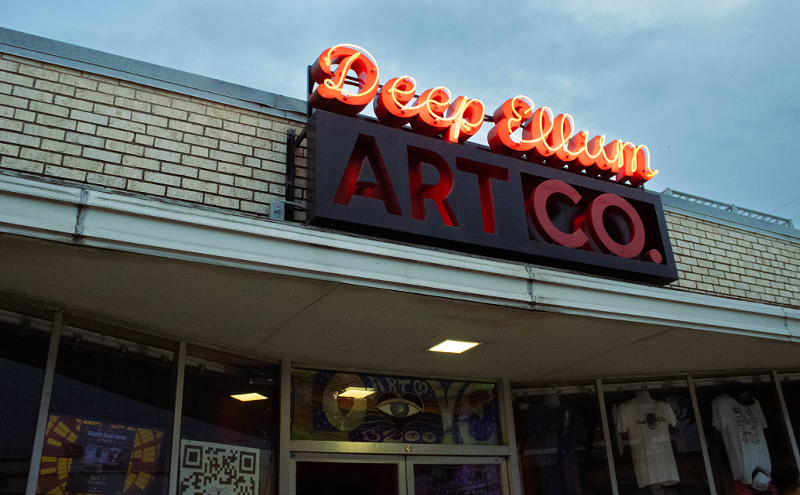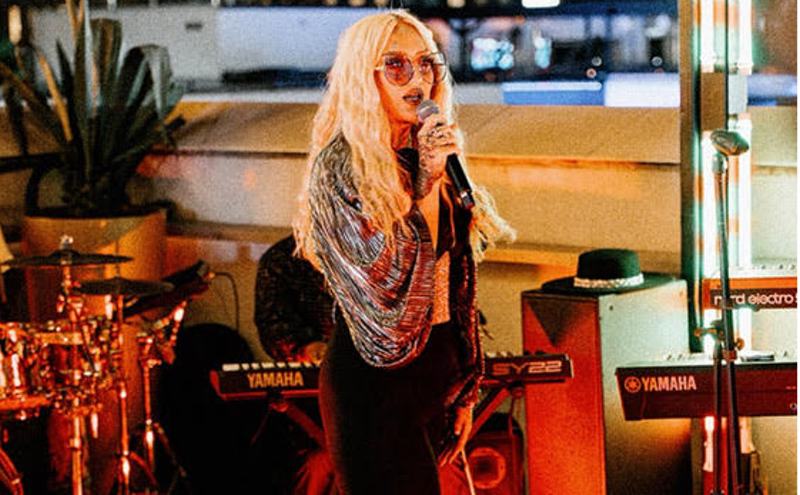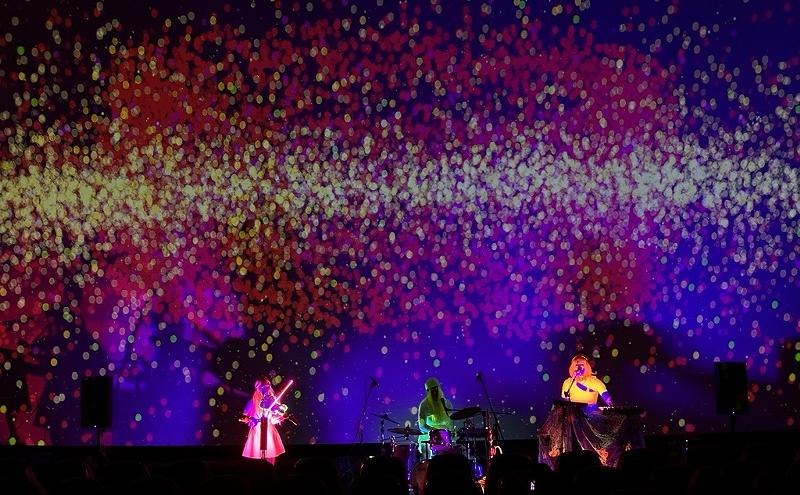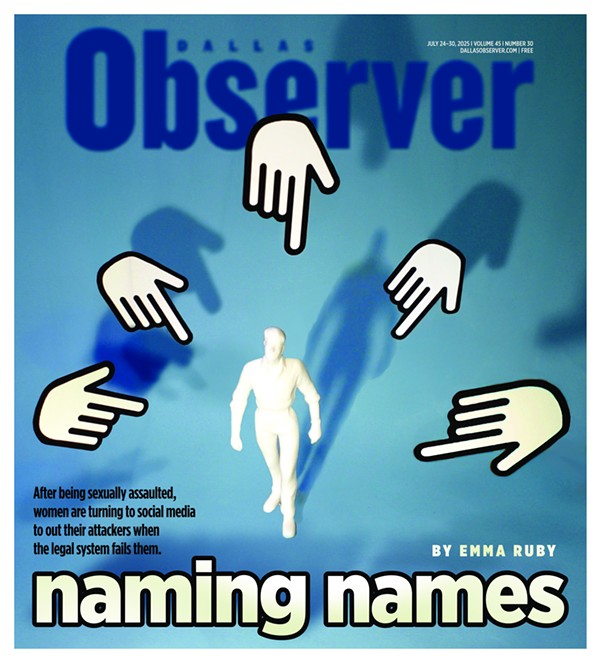Phil York and I crossed paths in summer 2009. I was researching the liner notes for the Heavy Light release of The Relatives' Don't Let Me Fall, a stunning revelation of Dallas gospel-funk from the early '70s, which York engineered at Autumn Sound Studio in Garland. My interview request was greeted with this email:
"Your request for an interview with me and my relatives would be difficult to arrange quickly. Some of them live in the far reaches of the USA. Furthermore, they don't all get along well. And, really, they're a boring lot. I cannot imagine a useful purpose in interviewing my relatives. Heck, I don't even like being around most of them and I work hard to endure family reunions as infrequently as they occur."
He was kidding. York remembered The Relatives. He remembered everything.
York was not a household name in Texas music. Sound engineers seldom are. Yet few had a bigger impact on local music over the last 50 years than the Dallas native, who died August 4 at the age of 70.
Over the course of five decades, York earned three Grammys, two gold records and reached the charts with artists as diverse as Willie Nelson, R&B vocal trio the Van Dykes, Helen Reddy and singer-turned-televangelist Kenneth Copeland. More recently, his expertise in audio restoration made him sought after by reissue labels.
York graduated from South Oak Cliff High School in 1960 and dove headfirst into the music business shortly thereafter. He first sat behind the boards at South Dallas R&B studio Sonic Productions before learning the ropes from legendary Longhorn Ballroom impresario Dewey Groom at Echo Sound in Mesquite.
"I loved the crooners and big bands and still do, but here I am in Texas in the late '60s, wanting to be in the music business," he said. "I was not a listener of country music. To me, it was sort of hick-y and all about drinking and killing and dying and cheating. I wasn't fond of it. I was 19 or 20 years old, so I wanted the latest stuff: Top 40, Elvis Presley, The Coasters, The Platters, The Drifters."
York nearly scared off a client dressed to the nines in Western wear, spurs and all, when he asked the lap steel guitarist if the band would be playing Hawaiian music.
"I realized at that point I'm in Texas and there's going to be plenty of country music, and boy there has been. I've learned to really love it and appreciate it."
After he started freelancing at Autumn Sound in the mid-'70s, York called in a favor to Dallas native Mickey Raphael, Willie Nelson's harmonica player.
"I heard a rumor that Willie was tired of recording in Nashville," York related. "He was looking for a place to record, hopefully in Texas. I invited them in for a free session at Autumn Sound. No strings attached, no cost. Just come on in and see if you like it. Willie's sister, Bobbie, absolutely fell in love with that Bösendorfer piano. Who wouldn't? At the time, it was bought for $17,000 and that was the discount price."
The pitch worked and soon the band was back to record Red Headed Stranger. Here, York relates the story of how a seminal song came to be.
"Willie had been up in Bear Creek, Colorado, in a cabin, and he had made a cassette of the whole album, just he and his guitar. The band had never heard this stuff when they got in the studio. He started up on 'Blue Eyes Crying in the Rain' and everybody was jamming. The drums were going with the steel guitar licks, and all the players. Willie said, 'All right, I'm gonna play this song with just me and my guitar. If you can't add something really good to it, don't play.'
"The drummer got up and left. The steel guitar player got up and left. The lead guitar player got up and left. We did one take, maybe two, just bass, Willie's guitar, harmonica. That's the way it went out."
A year later, Nelson and York were in the studio cutting The Sound in Your Mind when some Nashville suits from Columbia records called requesting the original Stranger tapes. They wanted to dress the song up for a CMA television show.
"He just said two words," York recalled of Willie. "The first one starts with 'F' and the second starts with 'Y,' and BANG!, he hung up the phone.
"In Texas, Willie could get away with whatever he wanted. It was artistic freedom. My little contribution to that — it wasn't great — but I tried to help him capture his creation, not tell him what he should be doing."
York also spent one long summer night with The Rolling Stones at Sumet-Burnet Studio in June 1972.
"As fate would have it, when they were in the Dallas area, someone called and scheduled the Stones from 4 p.m. to 4 a.m. and they assigned me to it. The group had scheduled it for rehearsal, not recording. We were in Studio A, which was a huge studio and the day before they brought in a huge P.A. system. It was supposed to be rehearsal, so I took all the microphones and moved them into Studio B."
Stones producer Andy Johns asked for the worst microphone in the studio and told York to place it high in the corner of the room inside the cone of the P.A. system.
"That's your lead vocal mic," York remembered him saying.
"I leaned over and asked Andy Johns, 'What are y'all gonna do with these tapes?' He said, 'Every city we go to, we try to make some kind of a tape. Back in London, we'll sit around, drink booze, do some overdubs, add some applause and we'll have the next Rolling Stones live across America album.'"
The rehearsal was a tune-up for the next night's Tarrant County Convention Center show, which was taped for a concert film. Whether the Sumet-Burnet sessions were ever layered with canned applause is hard to say, but bootlegs of the tapes have circulated for years under various names, most recently Dallas Rehearsals 1972. If the cuts sound rough, there's good reason.
"During one of these breaks, there was a saxophone player crawling face down on the floor," York said. "The drummer was out of the drum booth getting some food. The saxophone player crawled into the drum booth and stuck his head inside the kick drum. I said, 'Say, what are you doing?' He looked at me with one eye like a flounder coming out of the water and says, 'I'm trying to hear the beat.'
"They left about 4:30 or 5 in the morning. I locked all the doors and was by myself and this place was strewn with creature leftovers. Eaten hamburgers, uneaten hamburgers, boxes of food. There were empty beer cans, liquor bottles, other stuff I can't mention that I wasn't even sure what it was. It was my job to clean up. I went out to the shed behind the studio and got a shovel and a wheel barrow. I pulled out all the mic cables and studio stuff and piled all this stuff in the middle of Studio A at Sumet-Burnet. I swear the top of that pile came to exactly eye level.
"All in all, I think what The Rolling Stones did in the studio that night was not as good as most of the better local bands. The local bands were better prepared and seemed to care more about their music."
York was always a champion of local music. He was an unlikely advocate of the early Dallas punk scene, recording two albums with the Nervebreakers, and played strictly Texas platters on KNON for the better part of the '80s.
"In exchange for some technical services and a few turntables, they gave me a radio show and my choice of time slot, which was Saturday night from 7 to 9 p.m. For six and a half years I hosted the Texas Toast and all I played was local music, Texas-made music."
Chances are York was sitting at the controls when some of that music was put to tape.












